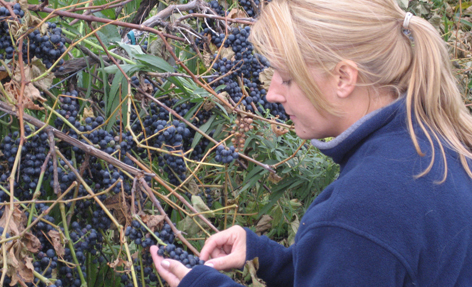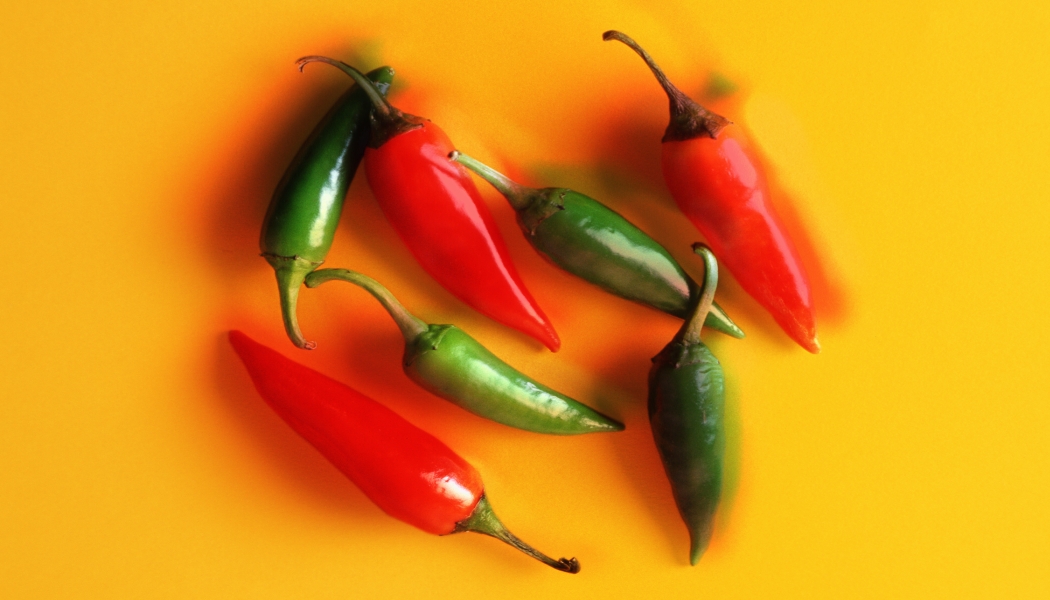by Kelli Bergthold
photos by Lois Manno & courtesy LaBelle Winery
You can ferment just about anything, so when the Fiery Foods editors heard about a Jalapeño Cooking Wine from LaBelle Winery, we knew we had to try it. LaBelle is a small winery located in Amherst, New Hampshire, and if you think good American wine only comes from the Napa Valley, you’re wrong. From their award-winning grape and fruit wines to their cooking wines made with peppers, onions, and heirloom tomatoes, LaBelle is full of surprises.
 |
|
Amy LaBelle at her winery in Amherst, NH. |
“I want to make wines that really reflect New England tradition,” says corporate attorney-turned-winemaker Amy LaBelle. “We don’t make anything that doesn’t grow in New England because we want to showcase this region.”
LaBelle got her start after touring a winery in Nova Scotia that was producing a blueberry wine. Inspired by the chemistry and creativity of wine making, LaBelle says, “I had that moment where the skies parted, and I thought, ‘Oh my gosh, I think I’m supposed to be doing this!’”
There are only a few dozen wineries in New England, and their harvests are smaller than their west coast equivalents. But what New England wineries lack in volume, they make up for in creativity and dedication. Amy LaBelle makes each and every bottle of wine the winery produces, while her husband manages the operations and bottling. Working with local fruit farmers and using her own crops of Seyval Blanc and a French hybrid red grape called Marechol Foch, LaBelle has created an enticing line of eighteen wines that are distinctly New England, featuring ingredients like blueberries, red raspberries, apricots, heirloom apples, and cranberries.
So what is a jalapeño wine doing in the collection? “It’s actually a funny story,” says LaBelle, who first started fermenting jalapeños after her home garden became overrun with the pepper plants one year. Not knowing what to do with such a large harvest of peppers, she fermented them, then  doled out the 2 gallons of spicy pepper wine into jars as Christmas presents.
doled out the 2 gallons of spicy pepper wine into jars as Christmas presents.
“Next thing I know, people were asking me when they could get more jalapeño wine—they’d used theirs up!”
LaBelle turned to local farms like Lull Farm in Hollis and Country Dreams Farm in Nashua, New Hampshire for peppers and started producing her Jalapeño Cooking Wine commercially. This wine contains no grapes or other fruit, just jalapeño peppers. It’s now one of the winery’s best sellers and was awarded silver medals at the Indy International Wine Competition and the Eastern States Exposition.
The pale gold-colored wine itself is remarkably crisp and spicy—a quality that can be attributed to the fermentation process LaBelle uses for her fruit wines and cooking wines. While grapes and apples are pressed and then fermented, LaBelle ferments the other fruits whole for four or five weeks, and then presses them off at the end. The yeasts used in the fermenting process are carefully selected for the flavors they’ll produce as the yeast consumes the sugar in the juice. While some yeast can lend leather or spice aromas to a wine, other yeast strains bring out the fruitiness. The result of this fermentation process: wines that embody the entire fruit, from skin to flesh to seed.
Back to top




